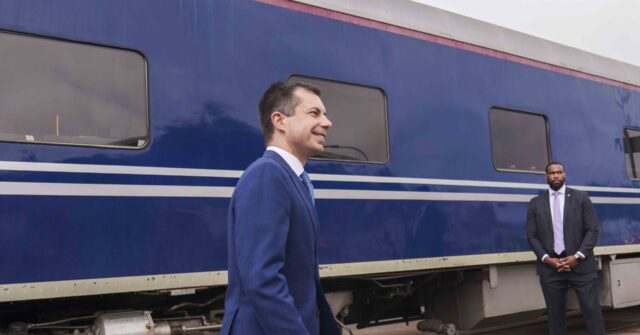Democratic Senators Alex Padilla and Adam Schiff, along with Representatives Pete Aguilar, Jim Costa, and Zoe Lofgren, have unified in their efforts to secure $536 million from Transportation Secretary Pete Buttigieg for California’s ambitious high-speed rail project. In a recent letter to Buttigieg, they emphasized the project’s significance, highlighting that the funding would primarily be utilized for designing critical infrastructure, specifically the rail segments connecting Bakersfield to Palmdale in Los Angeles County, and Gilroy to a central junction in the farming-rich Central Valley south of Chowchilla in Madera County. A key aspect of this request involves funding for the design of tunnels through the challenging terrains of the Tehachapi Mountains and Pacheco Pass, both vital for overcoming geographic obstacles in the proposed rail route.
California voters first backed the high-speed rail project in 2008, approving a $10 billion bond that was initially expected to support a $33 billion project to be completed by the year 2020. However, the project has faced numerous delays and budget overruns, which have significantly inflated projected costs to between $89 billion and $128 billion. As of now, the timeline for any segment of the project being operational has been pushed back, with the earliest anticipated completion for a functioning segment now set for 2030 at the very least. The ongoing adjustments to both the budget and the timeline illustrate the complexities and challenges associated with large-scale infrastructure projects, particularly one as transformative as the high-speed rail.
In addition to the funding request for the high-speed rail, California Democrats have made several last-minute appeals to the Biden administration. Recently, the administration endorsed Governor Gavin Newsom’s initiative to phase out the sales of gas-powered vehicles by 2035. This ambitious goal aims to transition California toward electric vehicles, although critics argue that the current pace of electric vehicle sales in California is insufficient to meet this target. The incoming Trump administration, led by President-elect Trump, is expected to reverse such initiatives, potentially derailing California’s transportation and environmental goals.
The anticipated shift in federal policies under the Trump administration includes the nomination of Sean Duffy, a former Republican congressman, for the position of Secretary of Transportation. This nomination aligns with a historical trend of selecting transportation officials from the Midwest, which has long been considered a hub for the country’s transportation infrastructure. Duffy’s appointment could signify a pivot in transportation policy direction at a federal level, especially in relation to high-speed rail and other infrastructure projects that require substantial federal investment and regulatory support.
The high-speed rail project in California has been emblematic of the state’s ambitious push for modern transportation alternatives, aiming to alleviate traffic congestion, reduce travel times, and lessen the reliance on fossil fuels. Despite its initial promise and public support, the project has struggled to maintain momentum amid rising costs, logistical hurdles, and a shifting political landscape. With changes in leadership anticipated at the federal level, advocates for high-speed rail may face additional challenges in securing the necessary federal support to continue their progress.
As discussions unfold regarding the future of the high-speed rail project and related transportation policies, stakeholders are keenly aware of the potential ramifications for California’s infrastructure investments. The intersection of state and federal policy, public funding, and shifting political priorities will likely dictate the project’s trajectory in the coming years. With the challenges already evident in the project’s evolution, the ability of California legislators to secure funding and support will be critical as they navigate an uncertain future that may be subject to significant changes in both state and federal governance.

